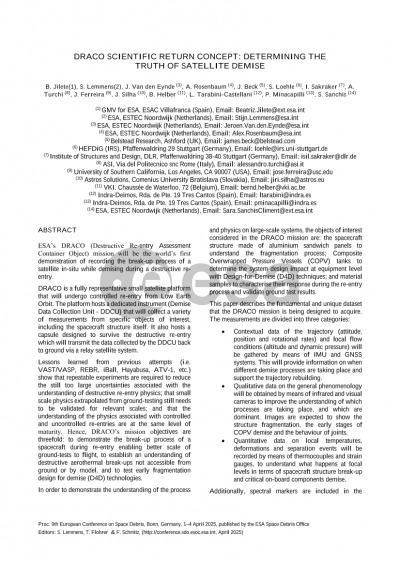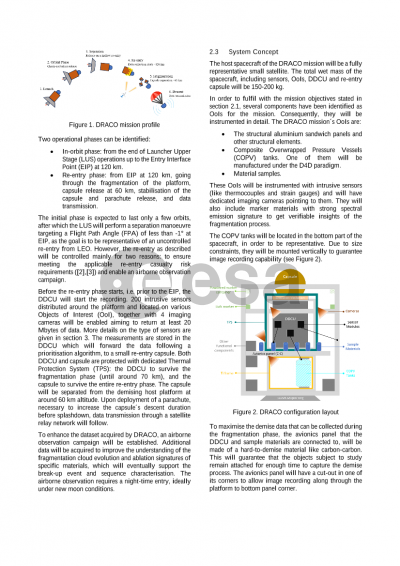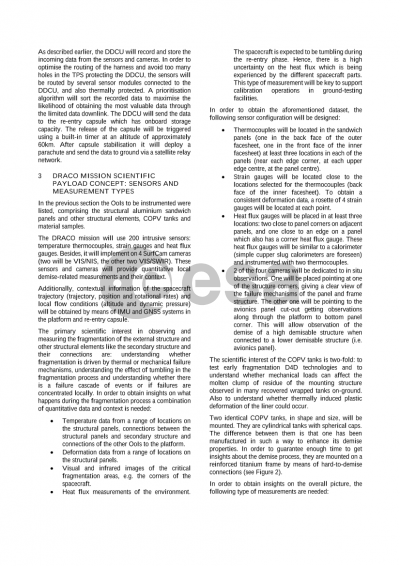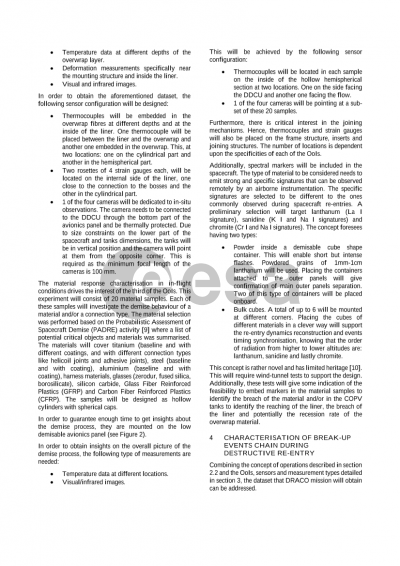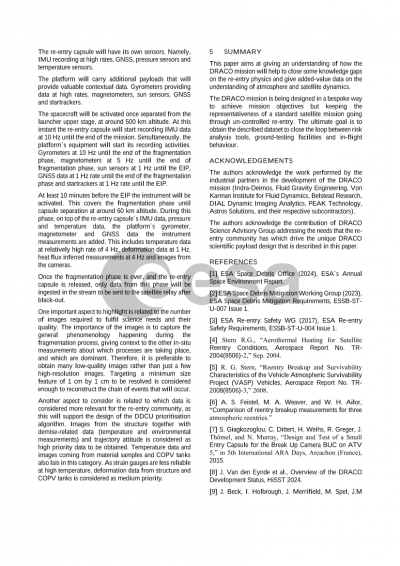Document details

Abstract
ESA’s DRACO (Destructive Re-entry Assessment Container Object) mission will be the world’s first demonstration of recording the break-up process of a satellite in-situ while demising during a destructive re-entry.
DRACO is a fully representative small satellite platform that will undergo controlled re-entry from Low Earth Orbit. The platform hosts a dedicated instrument (Demise Data Collection Unit - DDCU) that will collect a variety of measurements from specific objects of interest, including the spacecraft structure itself. It also hosts a capsule designed to survive the destructive re-entry which will transmit the data collected by the DDCU back to ground via a relay satellite system.
Lessons learned from previous attempts in the past (i.e. VAST/VASP, REBR, iBall, Hayabusa, ATV-1, etc.) show that repeatable experiments are required to reduce the still too large uncertainties associated with the understanding of destructive re-entry physics; that small scale physics extrapolated from ground-testing still needs to be validated for relevant scales; and that the understanding of the physics associated with controlled and uncontrolled re-entries are at the same level of maturity. Hence, DRACO’s mission objectives are threefold: to demonstrate the break-up process of a spacecraft during re-entry enabling better scale of ground-tests to flight, to establish an understanding of destructive aerothermal break-ups not accessible from ground or by model by recording the physics, and to test early fragmentation design for demise (D4D) technologies.
In order to demonstrate the understanding of the process and physics on large-scale systems, the objects of interest considered in DRACO mission are: the spacecraft structure made of aluminium sandwich panels to understand the fragmentation process, COPV tanks to determine the system design impact at equipment level with D4D techniques, and material samples to characterise their response during the re-entry process and validate ground test results.
This paper describes the fundamental and unique dataset that the DRACO mission is being designed to acquire. The measurements are divided into three categories:
• Contextual data of the trajectory (attitude, position and rotational rates) and local flow conditions (altitude and dynamic pressure) will be gathered by means of IMU and GNSS systems. This will provide information on when different demise processes are taking place and support the trajectory rebuilding.
• Qualitative data on the general phenomenology will be obtained by means of infrared and visual cameras to improve the understanding of which processes are taking place, and which are dominant. Images are expected to show the structure fragmentation, the early stages of COPV demise and the behaviour of joints.
• Quantitative data on local temperatures, deformations and separation events will be recorded by means of thermocouples and strain gauges, to understand what happens at local levels in terms of spacecraft structure break-up and critical on-board components demise.
Additionally, spectral markers are included in the spacecraft with different concepts that are illustrated in the paper. With the help of an airborne observation campaign, additional data will be acquired to improve the understanding of the fragmentation cloud evolution and ablation signatures of specific materials, which eventually supports the break-up event and sequence characterisation.
Preview
